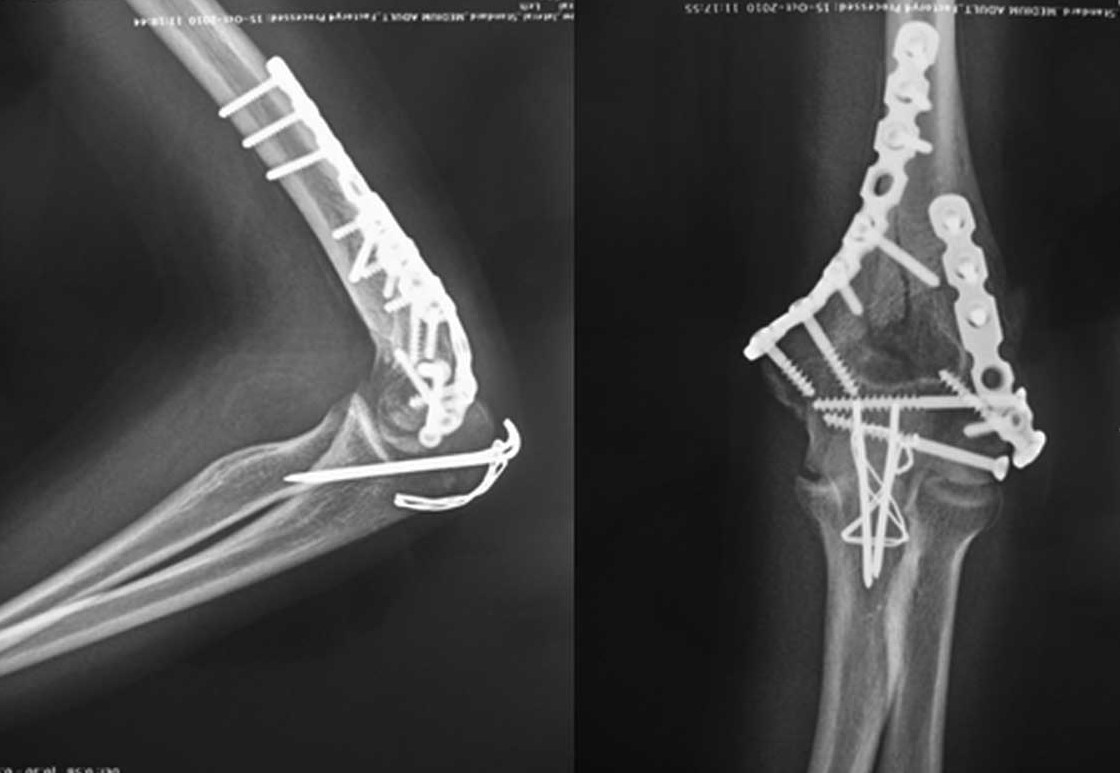Distal humeral fracturesThe end of the humerus furthest from your head is called the distal end and this forms a joint with the forearm, at the elbow. Old or young, if you fall onto the elbow there is a possibility of fracturing the end of the bone into several pieces. If you imagine the end of the humerus to be shaped like the end of a spade, where there is a round shaft that becomes a flat plate. The point at which the shaft changes to being a flat plate is a weak point and so the bone tends to break here. If the patient is quite elderly and frail with low demand and high risks of anaesthesia, the fracture can be managed in a plaster. The problem is this will heal in a poor position and the lead to very limited function at the elbow joint. For anyone with even moderate demand from the elbow joint, ORIF (fixation with a plate) is recommended. The surgery involves a general anaesthetic and an incision (cut) down the back of the arm from about mid-way down the arm to just beyond the elbow. The muscles are moved to one side and plates are applied to the bone to hold the pieces in position while they heal. In order to access the very end of the bone, sometimes an olecranon osteotomy is required. This is where the olecranon (tip of the ulna) is carefully broken-away and lifted off. This gives very good access to the joint and then after the plates are applied the olecranon is reattached, often using metal wires in a ‘tension band’ technique. It usually heals without any problem. After the surgery you will remain in hospital for at least one night. You will be in a plaster cast supporting the elbow and this will usually remain for 2 weeks. At that point you will see a member of the surgical team in outpatients and have the plaster removed and the wound checked. Normally you will be allowed free from both plaster and dressings at that stage and you could get the wound wet. It is then time to start moving the elbow through a gentle range of movement. Early movement is aimed at preventing excessive stiffness of the joint. Some stiffness is unfortunately inevitable. The plates rarely need removing. On the image to the right, you can see plates have been applied to the humerus and the olecranon has been wired back on after utilising an osteotomy to access the joint. 
|